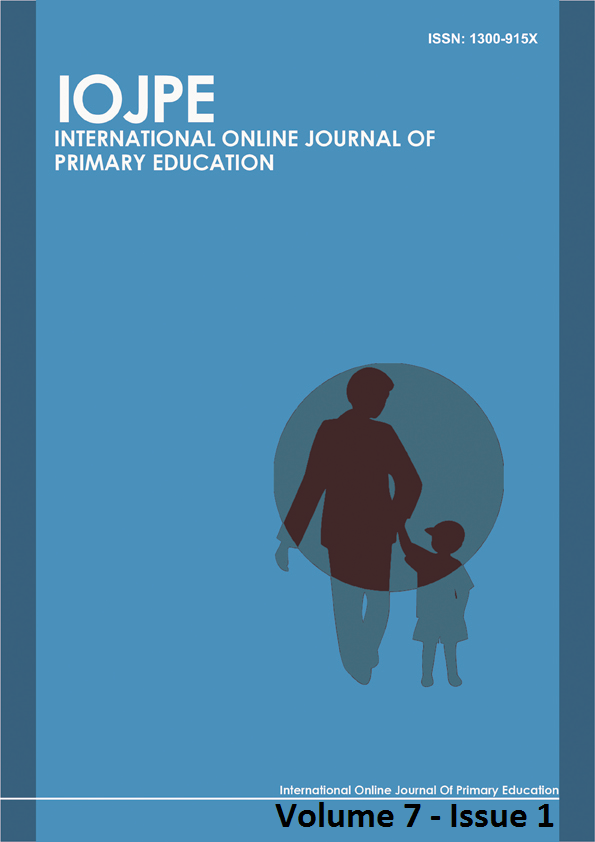FITTS’ LAW AS AN EDUCATION RESOURCE FOR HUMAN-COMPUTER INTERACTION IN COMPUTER SCIENCE CURRICULA
Abstract
Fitts’ Law is, more often than not, thought of as standard knowledge in the field of Human-Computer Interaction. However, in many occasions, interface components are being built by professionals with little or no knowledge of HCI principles (e.g., software menus are often being built by software developers with no designer input). How much appreciation of Fitts’ Law exists among developers, and how does it affect our collaboration with them and the software they build and we use? To help answer this question, a survey among 65 designers and developers was conducted, as well as an analysis of the Computer Science undergraduate curricula from 94 internationally high-ranked universities. The contribution of this paper is twofold: firstly, treating Fitts’ Law as an Open Educational Resource and, secondly, the analysis identified gaps that extend beyond HCI Education and fall in the sphere of Epistemology.
Keywords: Fitts’ law; HCI; education; epistemology.
REFERENCES
Appert, C., Chapuis, O., and Beaudouin-Lafon, M. (2008). Evaluation of pointing performance on screen edges. Proceedings of the working conference on Advanced visual interfaces - AVI ’08, 119.
Brown, M.A. and Stuerzlinger, W. & Mendonça Filho, E. J. (2014). The Performance of Un-Instrumented In-Air Pointing. In Proceedings of Graphics Interface 2014 (GI '14). Canadian Information Processing Society, Toronto, Ont., Canada, Canada, 59–66.
Bureau, U.S. and Statistics, L. (2012). Monthly Labor Review, March 2012: The declining average size of establishments: evidence and explanations.
Chan, S., Wolfe, R., and Fang, X. (2002). Teaching HCI in IS/EC Curriculum. Eighth Americas Conference on Information Systems, 1011–1020.
Cockburn, A. and Bell, T. (1998). Extending HCI in the computer science curriculum. Proceedings of the third Australasian conference on Computer science education - ACSE ’98, ACM Press, 113–120.
Douglas, S., Tremaine, M., Leventhal, L., Wills, C.E., and Manaris, B. (2002). Incorporating Human-Computer Interaction into the undergraduate computer science curriculum. ACM SIGCSE Bulletin 34, 1, 211.
Drewes, H. (2010). Only one Fitts’ law formula please! Proceedings of the 28th of the international conference extended abstracts on Human factors in computing systems - CHI EA ’10, ACM Press 2813.
Fischer, G. (2008). Transdisciplinary Education and Collaboration. Lifelong Learning, 1–18.
Fitts, P.M. (1947). Psychological Aspects of Instrument Display. 1. Analysis of 270 ‘Pilot-Error’ Experiences in Reading and Interpreting Aircraft Instruments.
Fitts, P.M. (1992). The information capacity of the human motor system in controlling the amplitude of movement. Journal of Experimental Psychology: General 121, 3, 262–269.
Friedlander, N., Schlueter, K., and Mantei, M. (1998). Bullseye! when Fitts’ law doesn't fit. Proceedings of the SIGCHI conference on Human factors in computing systems - CHI ’98, 257–264.
Greenberg, S. (1996). Teaching human computer interaction to programmers. interactions 3, 4, 62–76.
Guiard, Y. and Perrault, S.T. (2011). Fitts ’ Law as an Explicit Time / Error Trade-Off. 1619–1628.
MacKenzie, I.S. and Oniszczak, A. (1998). A comparison of three selection techniques for touchpads. Proceedings of the SIGCHI conference on Human factors in computing systems - CHI ’98, 336–343.
MacKenzie, I.S. (1992). Fitts’ law as a research and design tool in human-computer interaction. Human-Computer Interaction 7, 1, 91–139.
Mandryk, R.L. and Lough, C. (2011). The effects of intended use on target acquisition. Proceedings of the 2011 annual conference on Human factors in computing systems - CHI ’11, 1649.
Moore, G. and Lottridge, D. (2010). Interaction design in the university. Proceedings of the 28th of the international conference extended abstracts on Human factors in computing systems - CHI EA ’10, ACM Press, 2735.
Nicosia, M., Oulasvirta, A., and Kristensson, P.O. (2014). Modeling the perception of user performance. Proceedings of the 32nd annual ACM conference on Human factors in computing systems - CHI ’14, 1747–1756.
Pastel, R., Brown, C., Woller-Carter, M., and Kumar, S. (2012). Teaching Human Factors to Graduate and Undergraduate Computer Science Students. Proceedings of the Human Factors and Ergonomics Society Annual Meeting 56, 1, 595–599.
Pastel, R. (2005) Integrating science and research in a HCI design course. ACM SIGCSE Bulletin 37, 1, 31.
Rusu, C., Rusu, V., Roncagliolo, S., and Rubio, J.M. (2007). A Systematic Approach to Usability Practices in Computer Science Curricula. CLIHC.
Surakka, V., Illi, M., and Isokoski, P. (2004). Gazing and frowning as a new human--computer interaction technique. ACM Transactions on Applied Perception 1, 1, 40–56.
The Joint Task Force on Computing Curricula (Association for Computing Machinery / IEEE-Computer Society). (2013). Computer Science Curricula 2013: Curriculum Guidelines for Undergraduate Degree Programs in Computer Science. ACM, Inc.
Thimbleby, H. (2013). Targeting the Fitts Law. Interactions 20, 1, 12.
Downloads
Published
Issue
Section
License
Copyright (c) 2021 International Online Journal of Primary Education (IOJPE) ISSN: 1300-915X

This work is licensed under a Creative Commons Attribution-NonCommercial 4.0 International License.





